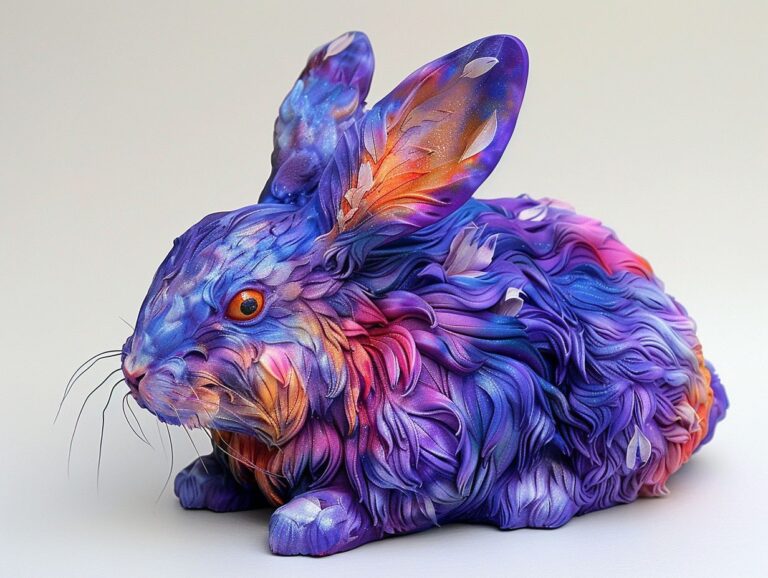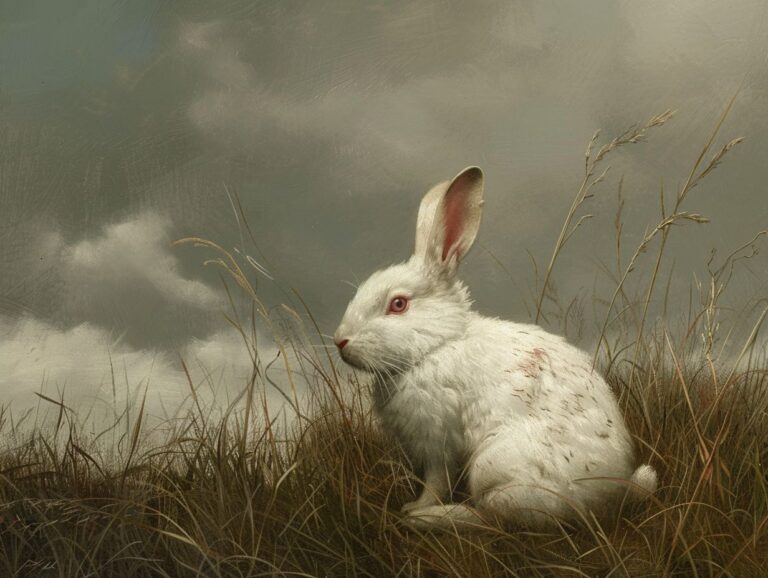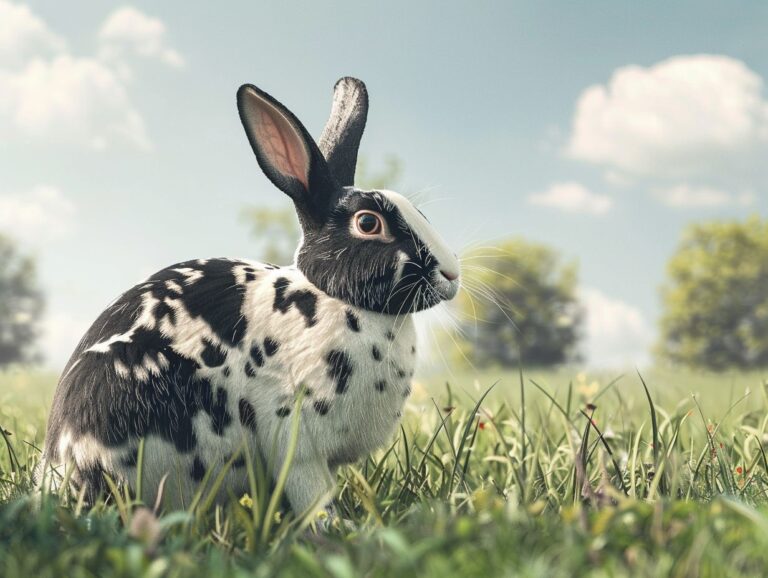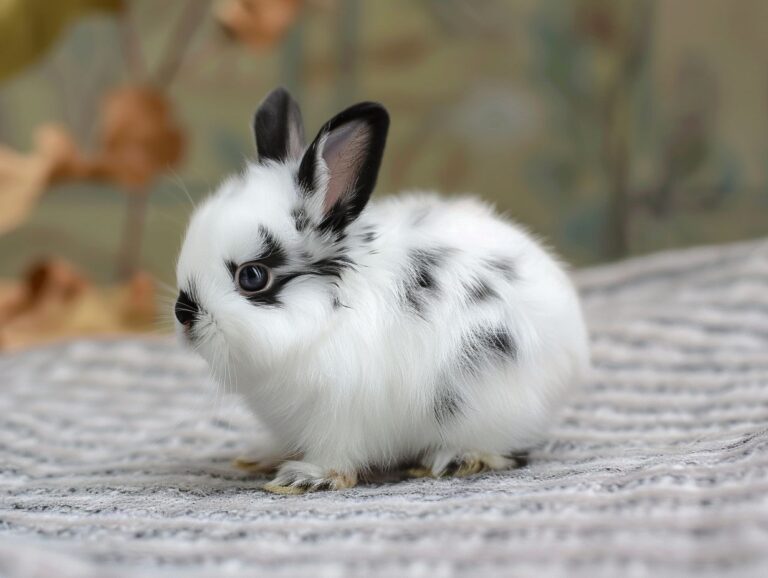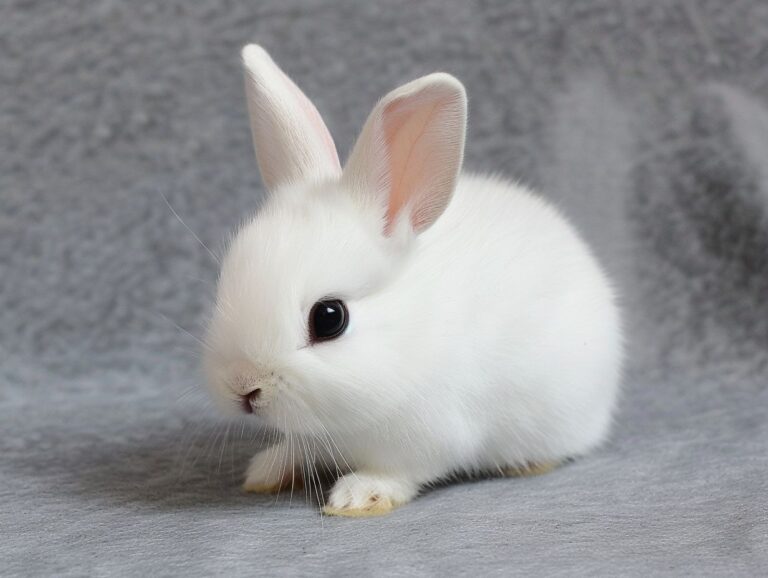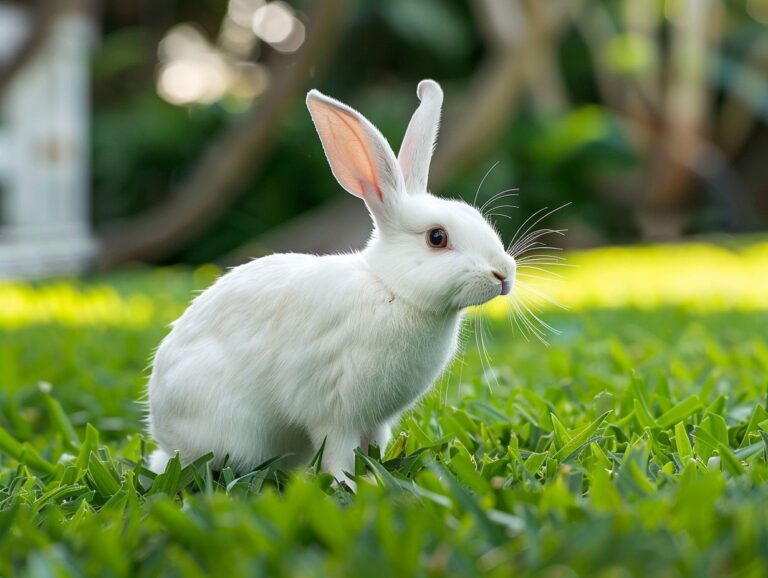Havana Rabbit Breed: Characteristics, Care, History, and Breeding Practices
Curious about the Florida White rabbit breed? This article covers everything you need to know about these charming rabbits, from their physical characteristics to their personality traits.
Learn about the history of Havana rabbits and their original purpose of breeding, as well as their care requirements, including housing, diet, and grooming needs.
If you’re interested in breeding Havana rabbits, find out the best practices and common health issues to be aware of. Explore what makes Havana rabbits a popular pet and why they are a great choice for families.
Key Takeaways:
What Is The Havana Rabbit Breed?
The Havana Rabbit breed is a distinctive type of rabbit known for its rich chocolate-colored fur and compact body type. It is recognized by the American Rabbit Breeders Association as a unique breed with a fascinating history.
Havana Rabbits have a charming personality to match their striking appearance. They are often described as intelligent, curious, and friendly animals, making them great companions for both adults and children alike. Despite their small size, they are known for their energetic and playful nature, enjoying hopping around and exploring their surroundings.
In terms of care, Havana Rabbits require regular grooming to maintain their luxurious coat in top condition. They should also have a well-balanced diet consisting of hay, fresh vegetables, and pellets to keep them healthy and active.
What Are The Physical Characteristics Of Havana Rabbits?
Havana Rabbits are known for their mink-like fur in a rich chocolate color that covers their compact bodies. Their eyes are a striking feature, complementing their overall appearance.
The fur of Havana Rabbits is incredibly soft and dense, closely resembling the luxurious quality of mink fur. This lush dark chocolate hue is the signature color of the breed, setting them apart from other rabbit varieties. With their compact bodies and sleek fur, Havana Rabbits exude elegance and charm.
Their eyes, typically bold and expressive, often showcase shades of dark brown that perfectly harmonize with their coat. These vibrant eyes add a touch of intensity to their already captivating presence, making them stand out in rabbit shows.
What Are The Personality Traits Of Havana Rabbits?
Havana Rabbits are known for their gentle and mellow temperament, making them ideal pets for people who enjoy a cuddly companion with a calm disposition.
These rabbits are characterized by their striking appearance, featuring a shiny, rich chocolate-colored coat that gives them a sophisticated and elegant look. Their compact bodies are complemented by soft, dense fur, adding to their overall charm.
Along with their physical beauty, Havana Rabbits are praised for their loving and affectionate nature. They are known to form strong bonds with their owners, often seeking out attention and enjoying gentle petting sessions.
Despite their sweet demeanor, Havana Rabbits also exhibit a playful side, showing curiosity and a willingness to interact with their surroundings, making them engaging companions for individuals or families looking for a pet with both charm and personality.
What Is The History Of Havana Rabbits?
The history of Havana Rabbits traces back to the Netherlands, where the breed originated before being introduced to the US. The Havana breed has undergone variations and mutations, resulting in different types being named over the years.
Originally developed in the 19th century, Havana Rabbits were prized for their rich, dark fur and compact size. The breed quickly gained popularity in the United States due to its striking appearance and friendly demeanor. As the breed spread to other countries, such as England and France, breeders began to experiment with different breeding techniques to enhance specific traits.
These breeding efforts led to the emergence of various color variations within the Havana breed, including black, chocolate, and blue. Some of the distinct types, such as the Chocolate Havana Rabbit, were named after their unique coat colors, which set them apart from the traditional black Havana Rabbits.
What Was The Original Purpose Of Breeding Havana Rabbits?

This breed was meticulously crafted through selective breeding practices aimed at refining the quality of their fur for commercial purposes. Havana Rabbits were desired for their dense, sleek coats resembling those of mink. Breeders focused on specific color markings, density of fur, and overall coat quality to meet high standards set for fur production.
Historically, these rabbits were selectively bred for their prime fur attributes, which still stand out today. Their adaptability to different cage types, including hutches, singly suspended cages, and group pens, makes them versatile options for breeders based on space and preferences. Havana Rabbits have maintained their reputation as a prized breed due to their ability to thrive in various housing setups while preserving their valuable fur qualities.
What Are The Care Requirements For Havana Rabbits?
Caring for Havana Rabbits involves providing proper nutrition, grooming their mink-like fur, understanding their specific body type, and ensuring a suitable environment to enhance their quality of life and increase their life expectancy.
In terms of nutrition, Havana Rabbits thrive on a diet rich in high-quality hay, fresh vegetables, and a balanced rabbit pellet mix. Ensuring they have access to fresh water at all times is crucial for their well-being.
Grooming plays a significant role in maintaining the luxurious coat of a Belgian Hare Rabbit Breed. Regular brushing not only removes loose fur but also helps prevent matting and keeps their coat shiny and healthy.
Creating an environment that mimics their natural habitat is essential. Providing a spacious cage with room to hop around and play, as well as enriching their living spaces with tunnels, toys, and safe chewable items, can keep them mentally stimulated and physically active.
Factors such as temperature control and proper ventilation are vital to ensure their comfort and health. Havana Rabbits are sensitive to extreme temperatures, so it’s important to keep their surroundings within a moderate range.
What Type Of Housing Is Suitable For Havana Rabbits?
For Havana Rabbits, a spacious and secure cage that accommodates their need for movement and showcases their mink-like fur is ideal, especially for those participating in shows.
These rabbits require a cage that provides enough space for them to hop around and stretch comfortably. The cage should be made of safe and durable materials to ensure their security. It’s essential to consider the proper ventilation and lighting within the enclosure to maintain their health and well-being. Incorporating platforms or levels in the cage can add variety to their environment and encourage exercise.
What Do Havana Rabbits Eat?
Havana Rabbits require a balanced diet that includes hay, fresh vegetables, and pelleted food to maintain their overall health, dental well-being, and support their mink-like fur appearance.
Hay is particularly important for Havana Rabbits as it aids in digestion and helps wear down their constantly growing teeth.
Fresh vegetables such as leafy greens and carrots provide essential vitamins and minerals.
Pelleted food formulated for rabbits ensures they receive adequate nutrients.
Proper nutrition not only impacts their physical health but also plays a significant role in maintaining the luscious coat that Havana Rabbits are known for.
What Are The Grooming Needs Of Havana Rabbits?
Grooming Havana Rabbits involves regular brushing to maintain their luxurious mink-like fur, paying special attention to their body and delicate areas around the eyes to ensure their coat stays in optimal condition.
For Havana Rabbits, the grooming routine should include a thorough check for any mats or tangles in their medium-length coat. Brushing not only helps in detangling but also distributes the natural oils, keeping their fur healthy and glossy. It is crucial to use a gentle slicker brush or comb to avoid causing any discomfort to the rabbit while grooming.
When grooming around the eyes, make sure to be extra cautious as this area is sensitive. Use a damp cloth to gently wipe away any discharge and prevent debris from accumulating, which could lead to infections.
How To Breed Havana Rabbits?

Breeders must carefully select breeding pairs based on genetic compatibility to avoid hereditary health issues in offspring. It is vital to maintain detailed records of lineage and health assessments to track the genetic history of the rabbits. Regular health checks and vaccinations are essential to prevent diseases and maintain optimal breeding conditions. Breeders Associations play a crucial role in setting standards for breeding ethics, promoting responsible practices, and organizing events to showcase the breed’s qualities. Collaboration within these associations helps ensure that Havana Rabbits maintain their distinctive characteristics while thriving in a healthy environment.
What Are The Best Breeding Practices For Havana Rabbits?
The best breeding practices for Havana Rabbits involve selecting compatible breeding pairs, providing adequate space in cages, and monitoring the breeding process to ensure successful outcomes, including the development of unique types like the Lilac Havana Rabbit.
When selecting breeding pairs, it’s crucial to consider factors like temperament, health history, and genetic diversity to promote strong and healthy offspring. Proper housing for breeding rabbits is essential, with each rabbit needing enough space to move comfortably and engage in natural behaviors. Regular supervision during breeding helps prevent aggression or injuries and allows breeders to intervene if necessary. Knowledge of the breed’s characteristics, such as the Lilac Havana’s distinctive coat color and markings, can guide breeders in recognizing desired traits and enhancing breed standards.
What Are The Common Health Issues In Havana Rabbits?
Havana Rabbits may be prone to specific health issues related to their breed characteristics, requiring attentive care, especially concerning their mink fur and overall well-being as a unique animal type.
One common health concern for Harlequin rabbit breed is their susceptibility to dental problems, which can arise due to their specific diet and dental structure. Owners should ensure their rabbits have access to proper dental chew toys and a diet that promotes dental health. These rabbits are known to be more prone to obesity, so maintaining a healthy diet and providing regular exercise is essential.
Furthermore, Havana Rabbits are susceptible to respiratory issues, such as Pasteurellosis, which can be exacerbated by stress or poor living conditions. It’s crucial to keep their living environment clean and stress-free to prevent such respiratory problems.
What Makes Havana Rabbits A Popular Pet?
The unique traits of Havana Rabbits, such as their gentle nature, distinctive appearance, and mellow temperament, contribute to their popularity as pets among families and individuals seeking a companion with specific qualities.
One of the appealing aspects of Havana Rabbits is their loving and social nature, making them ideal for families looking for a friendly pet. Their shiny, dark fur and elegant build also add to their aesthetic charm, making them a visually appealing choice for those considering pet rabbit care.
Their calm and easy-going temperament makes them suitable for households with children or other pets, as they are known to get along well with others and enjoy human interaction.
These endearing qualities combine to make Havana Rabbits a delightful pet choice for both novice and experienced pet owners.”
What Are The Unique Traits Of Havana Rabbits?
One of the standout features of Havana Rabbits is their cuddly nature, making them delightful companions for those seeking a pet with a soft and luxurious coat that resembles mink fur.
These adorable rabbits have a unique physical appearance characterized by their compact and muscular bodies, small rounded ears, and striking dark brown to black coat that shimmers in the light.
Their fur is incredibly soft to the touch, almost velvety, inviting you to stroke and cuddle with them for hours on end.
It’s no surprise that Havana Rabbits are considered one of the most affectionate and charming rabbit breeds, often forming strong bonds with their owners and eagerly seeking out attention and gentle affectionate strokes.
Why Are Havana Rabbits A Good Choice For Families?

Havana Rabbits are an excellent choice for families due to their friendly demeanor, captivating appearance with striking eyes, and the joy they bring through their cuddle-friendly nature, coupled with a good life expectancy.
The sociable nature of cinnamon rabbit breed makes them ideal for families, as they thrive on interaction with people and enjoy being part of the family dynamic. Their charming personality and affectionate behavior create a strong bond with their human companions.
Not only are tan rabbit breeds visually appealing with their glossy chocolate brown fur and distinctive eye color, they are also known for their outgoing and playful temperament, making them delightful companions for children and adults alike.
With an average lifespan of 5 to 8 years, lilac rabbit breeds provide long-lasting companionship and joy to their families, creating cherished memories and moments of shared play and affection.
Frequently Asked Questions
What are the distinguishing characteristics of the Havana Rabbit breed?
The Havana Rabbit breed is known for its unique coat color, which is a rich chocolate brown. They also have a compact body shape and short, erect ears.
How should I care for my Havana Rabbit?
Havana Rabbits should be kept in a clean and spacious enclosure, with plenty of room to hop and play. They should also be provided with fresh water, hay, and high-quality pellets as part of their daily diet.
What is the history of the Havana Rabbit breed?
The Havana Rabbit breed was developed in the Netherlands in the early 20th century. It was created by crossing Dutch and Himalayan rabbits to produce a unique chocolate-colored breed.
What are some important considerations for breeding Havana Rabbits?
Havana rabbits are known for their docile and gentle nature, making them great pets. However, it’s important to carefully select breeding pairs to ensure healthy offspring and avoid passing on any genetic health issues.
Is there anything I should be aware of when it comes to the health of Havana Rabbits?
Like all rabbits, Havana rabbits are prone to certain health issues such as dental problems and gastrointestinal stasis. Regular vet check-ups and a proper diet can help prevent these issues.
Can Havana Rabbits be kept as pets for children?
Yes, Havana Rabbits make great pets for children as they are gentle, calm, and easy to handle. However, it’s important to supervise interactions and teach children proper handling techniques to ensure the safety and well-being of both the child and the rabbit.


